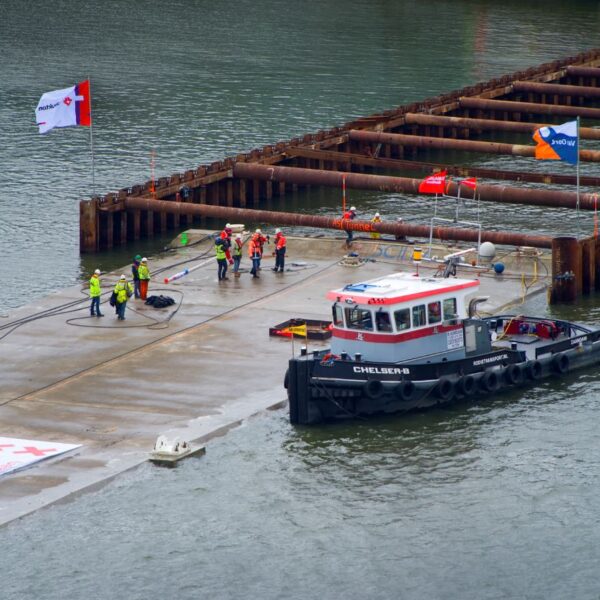CS Metro Station North/South Line
CS Metro Station North/South Line
How to build a metro station, including a tunnel, below the historical building of Amsterdam Central Station, while trains continue running and passengers continue to make use of the station? With this challenge, Strukton got down to work. The solution was found with new engineering techniques and smart phasing.
One of the key requirements during construction was that it had to be possible for passengers to continue to make use of the station. That was quite a challenge, given the large number of activities carried out at the same time. Activities were planned with passengers in mind. For example, dust barriers prevented inconvenience to passengers by keeping work activities out of sight. Noise pollution was kept to a minimum by planning activities such that work below the station could be carried out during night time.
With the large number of activities it was quite a challenge to make it possible for passengers to continue to make use of the station

Strukton is a world leader in the immersion specialism. We position tunnel elements and caissons accurately to the millimetre on the bottom of a river or sea. The immersion process remains the same. Execution is always custom work.
With respect for the historical building
The historical building had to be preserved. The building had to be protected from any damage during construction. Additional measures to protect the building were deployed, such as 24/7 monitoring of the building for any movement. In total, 5,500 mirrors were installed. These mirrors were used to detect any subsidence. The measurements were of inestimable importance, because, if necessary, they made it possible to immediately intervene.
The CS Metro Station is located 20 m below the Voorplein plaza directly in front of the Amsterdam Central Station’s main entrance. By first creating the roof over the construction pit and then conducting further building and excavation work underneath it, inconvenience for passengers in and around Amsterdam CS was restricted. Due to its mystical appearance, the Metro Station has been nicknamed the Cathedral.
The Tunnel
To be able to construct the tunnel, it was first necessary to give the historical building and the rail yard a new foundation. This meant that the old wooden foundation piles below the station building as well as under the rail yard had to be removed and replaced with a new foundation. The universally tested table construct was used for this purpose. A new structure was conceived for the ‘table’s legs’: {the sandwich wall} and vertical micro-tunnelling.
As soon as the table construct was complete, work commenced on the construction of the immersion trench. The soil below the table was excavated. After the completion of the immersion trench, concrete elements were sailed in from the IJ – a body of water and Amsterdam’s waterfront – in phases and sunk into the immersion trench. An immersion tunnel as such is not all that unusual in the Netherlands. What made it unique in this instance is that the tunnel element was sunk below an existing building.
The North/South Line was commissioned on 22 July 2018. The Line saves passengers travelling North-South and vice versa 15 minutes of travelling time.